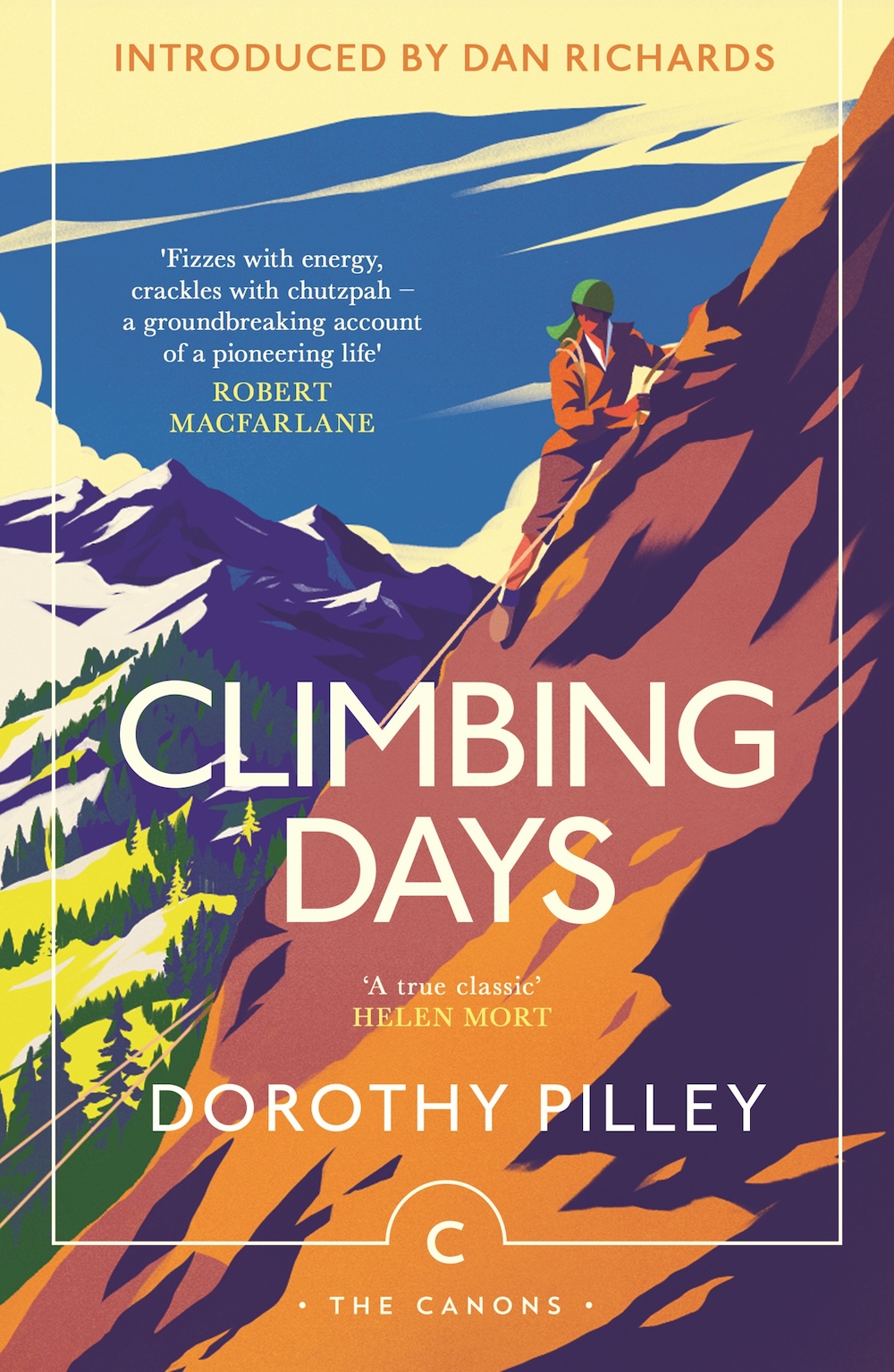Recently reissued by Canongate, Dorothy Pilley’s overlooked climbing memoir of 1935 is a much-needed addition to the canon from a robust and unselfconscious pioneer, writes Anna Fleming.

Born in 1894 – a year after Nan Shepherd – Dorothy Pilley offers another embodied journey into the mountains. Unlike Shepherd’s Zen-Buddhist focus on a single mountain range (the Cairngorms), Pilley’s approach is technical and geographically wide-ranging. She writes with passion of rock climbing and mountaineering in the UK and Europe, from Wales to the Lake District, the Alps, Corsica and Pyrenees.
With ecstatic energy, Pilley captures the obsession that takes hold when one touches a rock and gets bitten. ‘However lovely the valley, however serene the far-off peak, I fretted to be back on the snow and the rocks.’ A travel and adventure narrative, Climbing Days details Pilley’s introduction to and commencement of a serious alpine career, concluding with a pioneering ascent of a new route on the Dent Blanche in Switzerland.
From trials in bad weather, to hazardous glacier crossings, successes and disappointments in the mountains, this story of daring deeds could be boastful or macho but Pilley writes with modest humour. Triumph is fleeting. She captures a way of life and how climbing shapes ‘the form and fabric’ of the self.
But don’t be fooled. Beneath her humility lies a serious depth of skill. Pilley was cutting edge and pioneering, and she knew it. In 1921, she climbed ‘guideless’ and ‘manless’ with Lilian Bray and Annie Wells, explaining, ‘We felt ourselves to be pioneers.’
That same year, Pilley co-founded the Pinnacle Club. She describes women in the Alps, from ladies to ‘girl campers’ and ‘ski-ing girls’, giving an insight into the feminine mountain world, busy defying societal norms, while noting, ‘The genuine woman Alpinist is rare.’ The elusive women climbers become more visible when she charts their successes with an impressive list of first-ascents (from 1929-1933) by all-women teams.
Reading Pilley’s flow on the mountain, her passion, determination, courage, skill and rational problem-solving, questions irk. Her physical and psychological profile is the same as any good climber, past or present; man or woman. Since Pilley and her female contemporaries could clearly climb (and write) so well, then why has women’s climbing been so slow to develop? Why did we inherit men’s mountain stories?
Climbing Days is insightful on this matter. ‘In 1921,’ Pilley writes, ‘guideless mountaineering for women, sans hommes, had hardly started. Such feats as Mrs Le Blond’s traverse of Piz Palü had been hushed up, in a Victorian era, as “slightly improper”. Even ten years later criticism of such undertakings was not infrequent.’
Helen Mort evocatively captures this feminine vanishing act in No Map Could Show Them (2016):
When we climb alone
en cordée feminine,
we are magicians of the Alps –
we make the routes we follow
disappear
While thankfully a movement is underway today to retrieve these vanished women, another disappearance is taking place across the Alps. Reading Pilley’s book in Chamonix, I am curious to examine her journey through the lens of climate change: how many of the routes she climbed have since disappeared, I wonder? The mountains here – ever dynamic and changeable – have taken on an accelerated, extreme form of change. Rocks are falling; glaciers retreating; routes becoming unclimbable. The profession of guiding has become more dangerous and the old knowledge system that Pilley’s expert guide, Joseph Georges, relied on is not as dependable as it was. By the end of this century, when all the ice below 4000 metres has gone, her book will carry a very different significance. It will stand as a record of how things were.
That record is woven through the book, with descriptions of environment, equipment and nutrition, capturing many bizarre and entertaining aspects of historic mountain culture. The modern-day alpinist winces: they carried tinned food and jam. One cannot forget that this was a bourgeois pastime: after surviving a gruelling descent in a storm (expertly led by their alpine guide, Joseph Georges), Pilley’s husband ‘IAR’ produces a bottle of champagne. He had brought the bottle to toast the summit; but conditions were such he never brought it out of his rucksack. Today the Mer De Glace is littered with fragments of blue and green glass: remnants of past mountain toasts, carried down the river of ice.
Canongate have done a fantastic job recovering this overlooked story from the void. With beautiful cover design and an effusive introduction from Pilley’s great-great-nephew Dan Richards, Climbing Days is a much-needed addition to the canon, offering a vital perspective from a robust and unselfconscious pioneer. May more of these perspectives emerge.
*
‘Climbing Days’ is out now and available here (£12.34). Read an extract from Dan Richards’ introduction here.